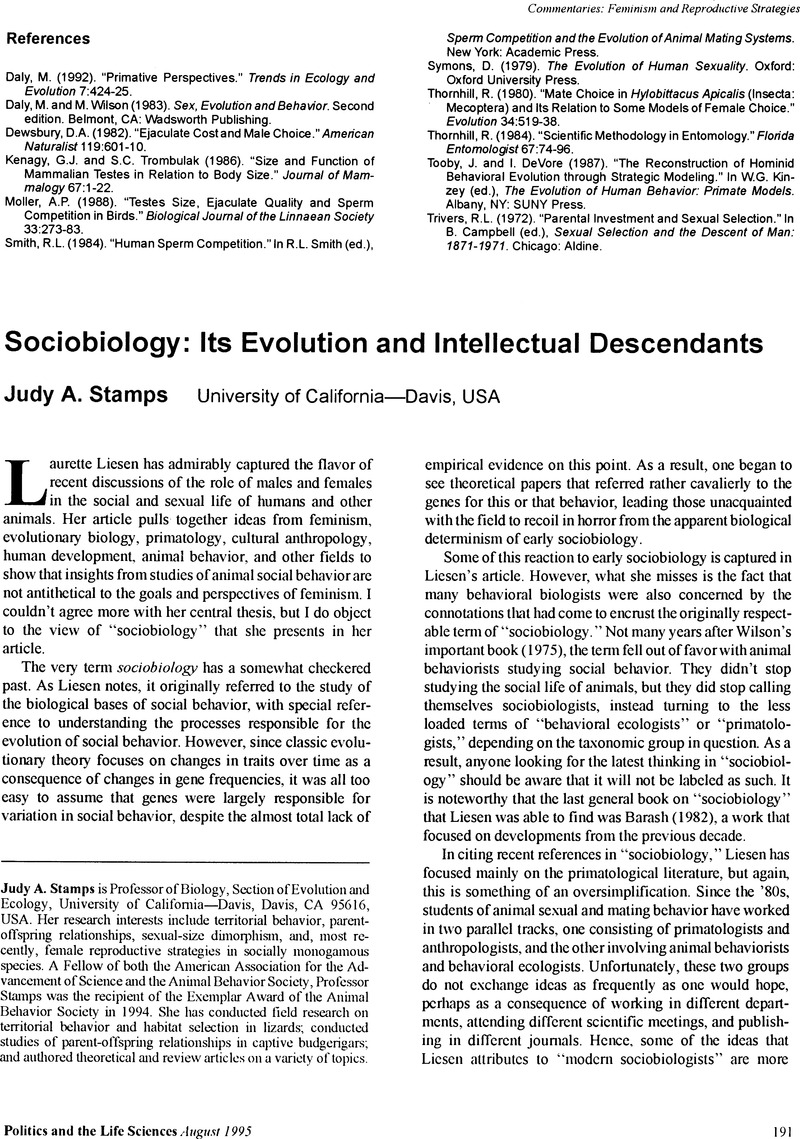Crossref Citations
This article has been cited by the following publications. This list is generated based on data provided by Crossref.
Liesen, Laurette T.
2007.
Women, behavior, and evolution: Understanding the debate between feminist evolutionists and evolutionary psychologists.
Politics and the Life Sciences,
Vol. 26,
Issue. 1,
p.
51.
Liesen, Laurette T.
2008.
The Evolution of Gendered Political Behavior: Contributions from Feminist Evolutionists.
Sex Roles,
Vol. 59,
Issue. 7-8,
p.
476.



